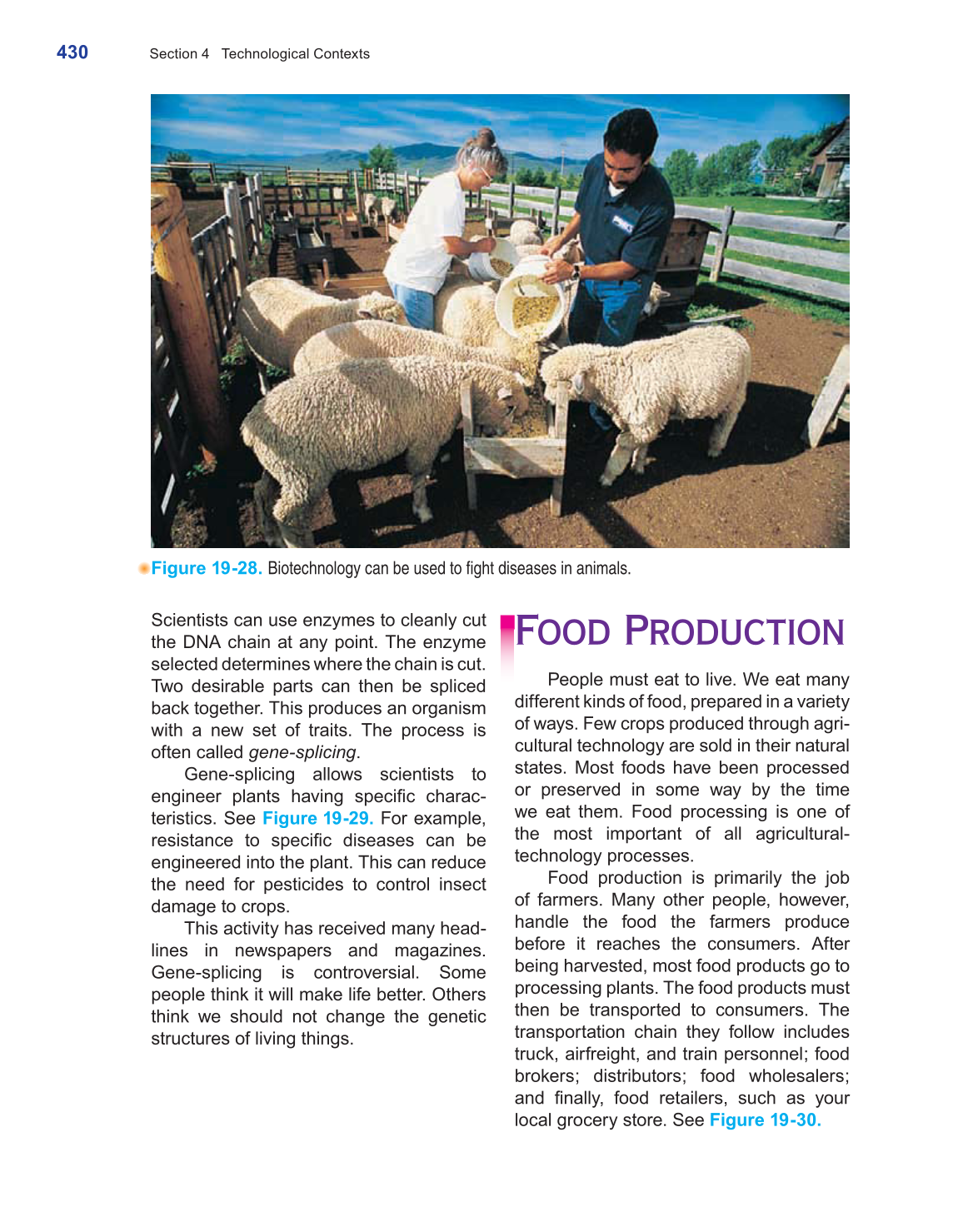430
Section 4 Technological Contexts
Scientists can use enzymes to cleanly cut
the DNA chain at any point. The enzyme
selected determines where the chain is cut.
Two desirable parts can then be spliced
back together. This produces an organism
with a new set of traits. The process is
often called gene-splicing.
Gene-splicing allows scientists to
engineer plants having specific charac-
teristics. See Figure 19-29. For example,
resistance to specific diseases can be
engineered into the plant. This can reduce
the need for pesticides to control insect
damage to crops.
This activity has received many head-
lines in newspapers and magazines.
Gene-splicing is controversial. Some
people think it will make life better. Others
think we should not change the genetic
structures of living things.
Food Production
People must eat to live. We eat many
different kinds of food, prepared in a variety
of ways. Few crops produced through agri-
cultural technology are sold in their natural
states. Most foods have been processed
or preserved in some way by the time
we eat them. Food processing is one of
the most important of all agricultural-
technology processes.
Food production is primarily the job
of farmers. Many other people, however,
handle the food the farmers produce
before it reaches the consumers. After
being harvested, most food products go to
processing plants. The food products must
then be transported to consumers. The
transportation chain they follow includes
truck, airfreight, and train personnel; food
brokers; distributors; food wholesalers;
and finally, food retailers, such as your
local grocery store. See Figure 19-30.
Figure 19-28. Biotechnology can be used to fight diseases in animals.
